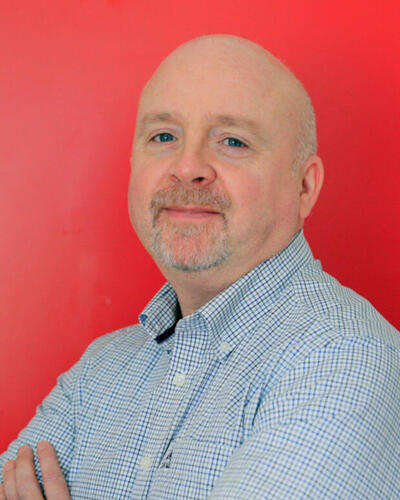- E-mailfergal.ofarrell@uib.no
- Phone+47 55 58 44 83+47 55584483
- Visitor AddressThormøhlensgt. 555008 BergenRoom528A1
- Postal AddressPostboks 78035020 Bergen
Drosophila as a model for human diseases: Several criteria make Drosophila a meaningful organism in which to model human diseases. Essentially, the majority of disease-related genes (75%) are conserved between the fruit fly and humans. In fact, as many disease-related genes are important for human and fly development these were often first described in the fruit fly. The fruit fly's body plan and internal organs have human counterparts in developmental and functional terms. To be more specific, during development we can take a human gene and use it to replace the function of a purposefully mutated fly gene. In this way, we can say the fly and human genes are so related they can do the same job (functional orthologs). Understandably, we can only check this relationship in one direction, putting human genes into the fly, not the other way around. In terms of organ functionality, we know that many of the cell types that make up human organs have fly counterparts and that these organs accomplish many of the same jobs (digestion, filtration, excretion, oxygenation, buffering starvation, behaviour, sensation) and produce or secrete much the same proteins or hormones to accomplish these tasks.
I make use of a Drosophila Ret-tumor-model with a focused interest on understanding factors that influence the spreading of tumor cells from the site of origin (early stages of metastasis) with an aim to use this knowledge towards cancer prevention. For more information
Fergal O’Farrell is an Associate Professor and research group leader at the Department of Biological Sciences (BIO) in Bergen. He was awarded his Ph.D. in Cell and Molecular Biology from the Karolinska Institute in Stockholm, Sweden, in 2008. The majority of this work was based on the use of the Drosophila melanogaster (the fruit fly, bananflue på Norsk) model to study gene function and peripheral nervous system development. His post-doctoral studies continued with both the fruit fly as a genetic model and Stockholm City as a base. This was in the lab of Professor Christos Samakovlis at the Wenner Gren Institute/Stockholm University, in the field of Receptor tyrosine kinase (RTK) signalling and role during development, characterising the function of an RTK related to mammalian proto-oncogene Rearranged during Transfection (Ret). Following a move to Norway and the Oslo Cancer Institute in 2011 Fergal continued the research with Drosophila and Ret, in addition to other work together with Professors Stenmark and Rusten establishing and characterising different cancer models and investigating the influence of vesicle transport to tumor development. During this time Fergal’s work was supported by personally awarded funding from Kreftforengingen (the Norwegian cancer society) and well as funding through the SFF center-of-excellence CanCell. Following a move to Bergen in 2020, Fergal still makes use of the Drosophila Ret-tumor-model with a focused interest on understanding factors that influence the spreading of tumor cells from the site of origin (early stages of metastasis) with an aim to use this knowledge towards cancer prevention.
From 2021 his research work is supported by a grant from the Norwegian Research Council (NFR). Read more at
- (2021). Host autophagy mediates organ wasting and nutrient mobilization for tumor growth. EMBO Journal. 14 pages.
- (2017). Microenvironmental autophagy promotes tumour growth. Nature. 417-420.
- (2017). Class III phosphatidylinositol-3-OH kinase controls epithelial integrity through endosomal LKB1 regulation. Nature Cell Biology. 1412-1423.
- (2017). Class III phosphatidylinositol-3-OH kinase controls epithelial integrity through endosomal LKB1 regulation. Nature Cell Biology. 1412-1423.
- (2013). Two-Tiered Control of Epithelial Growth and Autophagy by the Insulin Receptor and the Ret-Like Receptor, Stitcher. PLoS Biology. 15 pages.
- (2013). Phosphoinositide 3-kinases as accelerators and brakes of autophagy. The FEBS Journal. 6322-6337.
More information in national current research information system (CRIStin)
Khezri R, Holland P, Schoborg TA, Abramovic I, Takats S, Dillard C, Jain A, O’Farrell F et al. (2021) Host autophagy mediates organ wasting and nutrient mobilization for tumor growth. EMBO Journal. 2021 Jul 26:e107336. doi: 10.15252/embj.2020107336. Epub ahead of print. PMID: 34309071.
O'Farrell F, Lobert VH, Sneeggen M, Jain A, Katheder NS, Wenzel EM, et al. Class III phosphatidylinositol-3-OH kinase controls epithelial integrity through endosomal LKB1 regulation. Nature cell biology. 2017;19(12):1412-23. Epub 2017/10/31. DOI:10.1038/ncb3631. PubMed PMID:29084199.
Katheder NS, Khezri R*, O'Farrell F*, Schultz SW, Jain A, Rahman MM, Schink KO, Theodossiou TA, Johansen T, Juhász G, Bilder D, Brech A, Stenmark H, Rusten TE. (2017) Microenvironmental autophagy promotes tumour growth. Nature. Jan 19;541(7637):417-420. PMID: 28077876.
O'Farrell F, Wang S, Katheder N, Rusten TE, Samakovlis C (2013) Two-Tiered Control of Epithelial Growth and Autophagy by the Insulin Receptor and the Ret-like Receptor, Stitcher. PLoS Biol. 11(7):e1001612. PMCID: 3720245.
O'Farrell F, Rusten TE, Stenmark H (2013) Phosphoinositide 3-kinases as accelerators and brakes of autophagy. FEBS J 280: 6322-6337.
Drosophila Melanogaster, the fruit fly.
Small in size but large in its contribution to our understanding of numerous human diseases the fruit fly has played a leading role in the fields of developmental biology, genetics, cancer, and cell biology, to name just a few of the areas in which it has excelled. It's smaller and more compact genome when compared to other common model systems (fish, mouse, human cells) while still containing 75% of all human disease-related genes, has contributed to its attractiveness as a genetic model. The small fruit fly has a wide variety of genetic tools, more advanced than those of rival model systems, at its disposal, following over 100 years of use as a model system. Additionally, the ability to image all tissues during their development, coupled with the range of genetic manipulations possible gives a model system in which a gene or protein function can be assessed at a cell, organ and whole animal level with ease and speed. Welcome to the world of fly genetics where seeing is believing!
https://ofarrell.w.uib.no/research/fly-facilities-in-bergen/
